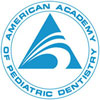Pulptomies
What is a Pulpotomy?
To give you an explanation of the meaning of a pulpotomy; we must first explain a bit more about the tooth. Inside of each tooth, beneath the enamel, sits a cluster of nerves and blood vessels. This part of the tooth, we call the “pulp”. When cavities or tooth decay have been left too long untreated, they may penetrate through the enamel and begin affecting the “pulp” of the tooth. This is the part of the tooth where the nerves are housed. It is not uncommon for cavities in primary teeth to reach the pulp of the tooth.
When this happens, your child will tell you their tooth or teeth hurt, and they may need a therapeutic pulpotomy.

A pediatric pulpotomy is a procedure we are fully qualified to perform in a calm and professional environment, ensuring both you and your child feel comfortable. The process starts with creating a small opening in the tooth’s enamel to remove the cavity.
Once the cavity is removed and the pulp is exposed, any infected pulp is carefully taken out. If there’s healthy pulp remaining, we treat it with a clinically proven medication that promotes long-term healing. This medication helps soothe the nerves inside the tooth and prevents bacteria from spreading to the root.
Afterward, a protective cap is placed over the tooth to seal in the healthy pulp. For permanent teeth, this cap is typically a crown. However, if the tooth is a primary (baby) tooth expected to last only another couple of years, and the remaining enamel is sufficient, we may use a composite filling instead.

Is a Pediatric Dental Pulpotomy the Same as a Baby Root Canal?
Yes. A pediatric pulpotomy is often referred to as a baby root canal.
Is it Serious?
If your child reports a toothache, it’s important to have them seen by us as soon as possible. When a cavity reaches the tooth’s pulp, the nerves inside begin to decay. In severe cases, the decay can spread to the root, leading to an abscess. Abscesses are extremely painful and can cause damage to the jawbone.
How do I Know if my Child Needs a Pulpotomy?
When you come in to see us after your child’s report of a tooth ache, we will conduct an interview and examination with you and your child. We will review your child’s dental history and discuss the symptoms your child is reporting. We will ask you various questions about the tooth in question: How intense is the pain coming from the tooth? How often is your child having the tooth pain? Is it continuous? Does anything give the pain relief? Then we will examine the tooth in question. We may then perform radiographs (X-rays) to determine the state of the pulp within the tooth.

Will the Pulpotomy Treatment be Visible After it is Completed?
The protective cap applied can be a stainless-steel crown, or a white zirconia crown. We will discuss this with you prior to the procedure to determine the best option for your child’s needs. Alternatively, if we use only a composite resin to fill the hole after the pulpotomy therapy, that composite typically matches the color of the tooth and would not be noticeable.
Will my Child have any Pain After the Procedure is Completed?
Your child should experience immediate relief after the procedure. We expect any pain to subside right away and completely disappear within a few days. We’ll provide you with instructions on how to manage any discomfort in the days following the procedure to ensure your child’s comfort.
What about pain during the procedure?
To ensure a painless experience, we can administer a local anesthetic to numb the affected area and the tooth. Additionally, our pediatric dentists are highly skilled in in-office sedation. We offer four sedation options and will discuss your child’s specific needs to determine the best choice. With over 25,000 sedations performed in our years of serving the community, you can trust that your child is in expert hands. For more information, please visit our sedation page.
If it’s Happening to a Primary Tooth, Why Save it?
Extracting an infected primary tooth too early can lead to complications. Primary teeth are essential for your child’s ability to speak, chew, and smile, and they also help maintain the proper spaces in the mouth for permanent teeth to emerge and align correctly. If a primary tooth is lost prematurely, the surrounding teeth may shift into the empty space, which can disrupt the natural development of the mouth and jaw. We aim to preserve the shape of your child’s jaw and prevent bone damage.
When your child reports a toothache, it’s important to address it right away. The worst-case scenario typically only happens if the tooth is left untreated for too long. Please take your child’s symptoms seriously and contact us as soon as possible.
Dentists on Our Team
Years Combined Experience
In-house Sedations
Patients
Counties Served
Staff members
Don't Wait Any Longer!
Schedule Your Child's Appointment Today








